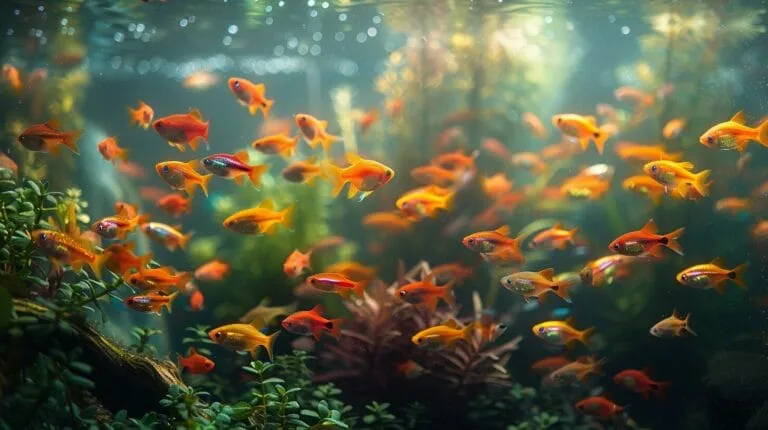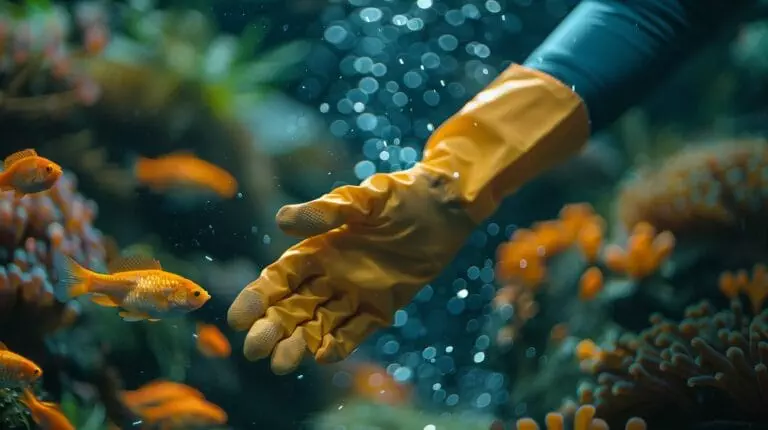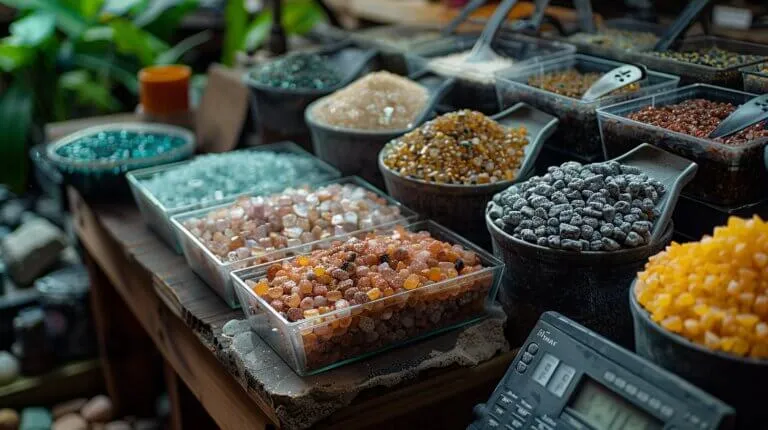Have you ever wondered if your stunning gouramis can share a home with elegant angelfish? The answer to Can Gouramis Live With Angelfish might surprise you! Understanding the compatibility of these two beautiful fish species is essential for creating a vibrant and harmonious aquarium. Mixing the wrong fish can lead to stress, hiding, and even aggression, which no fish lover wants to see in their tank.
In this article, we’ll dive into the fascinating traits of gouramis and angelfish, explore the factors that influence their compatibility, and discover the best tank setup tips to keep peace among your aquatic friends. You’ll learn how to identify aggressive behaviors in angelfish and find out which additional fish can thrive alongside them. Ready to unlock the secrets of a happy community tank? Let’s get started!
Can Gouramis Live With Angelfish? Understanding Compatibility
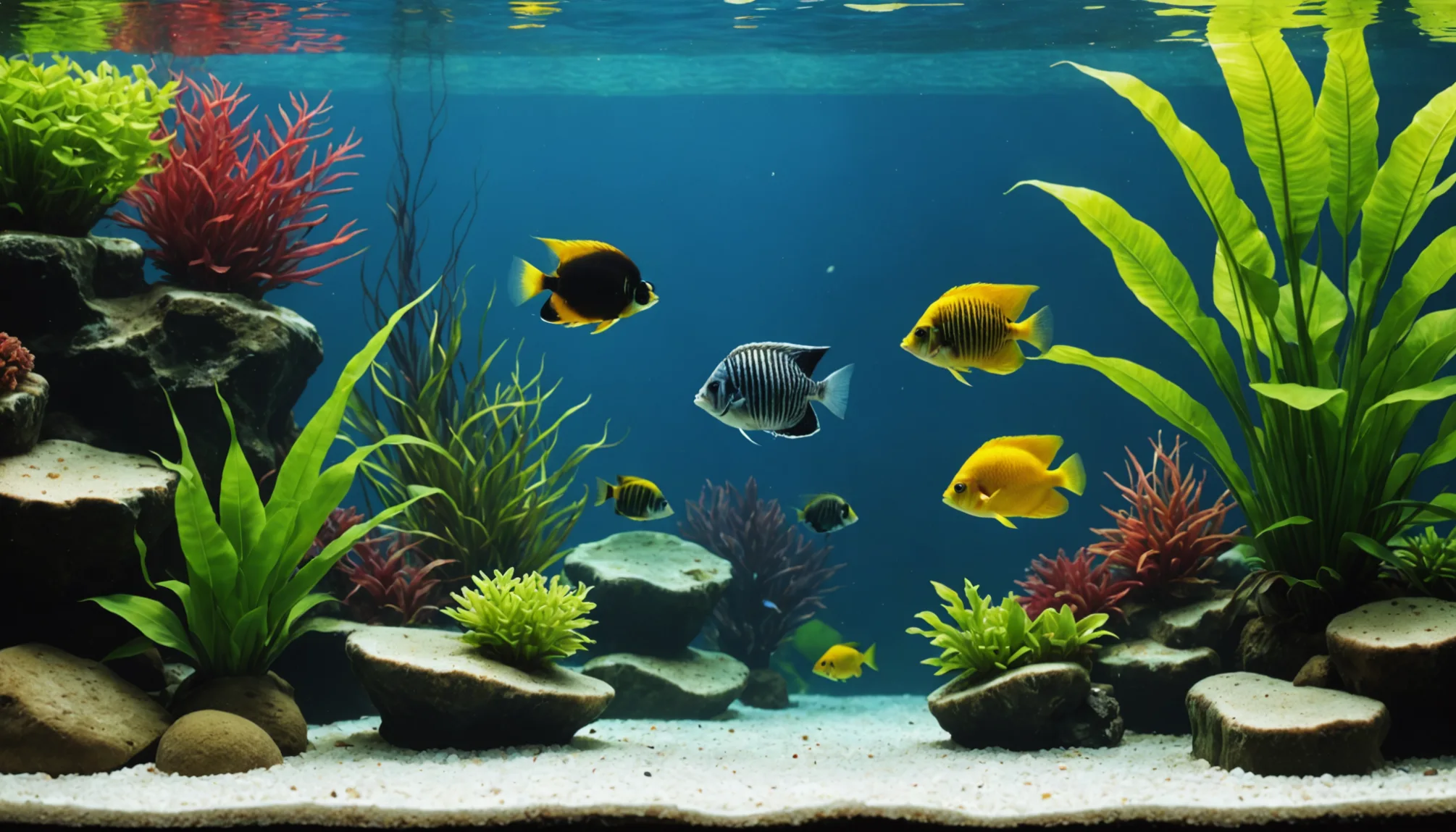
Overview of Gouramis and Angelfish Traits
Gouramis and angelfish are popular fish for community tanks. Gouramis are generally calm, while angelfish can show aggression, especially during breeding. Their compatibility can change based on their individual personalities.
Gouramis come in various types, such as blue dwarf gouramis and pearl gouramis, which usually exhibit peaceful behavior. In contrast, angelfish are known for being territorial, especially when protecting their eggs or fry. This territorial behavior can lead to conflicts if both species share the same tank.
Factors Influencing Compatibility in the Aquarium
The compatibility of gouramis and angelfish relies on several key factors:
- Tank Size: A larger aquarium is beneficial. A minimum tank size of 30 gallons is recommended. This space allows both species to swim freely and establish their territories without feeling crowded.
- Environment: Adding plenty of plants and hiding spots can help reduce stress. These elements provide shelter for gouramis, allowing them to feel secure, especially if angelfish show aggression.
- Water Conditions: Both species prefer slightly acidic water with a pH level between 6.5 and 7.5. Maintaining a temperature between 75 and 82 degrees Fahrenheit is also vital for their health.
Identifying Aggressive Behaviors in Angelfish
Angelfish can become protective of their territory. During breeding season, they often show increased aggression, which may create issues when kept with gouramis. Signs of aggression include:
- Chasing: If angelfish chase gouramis around the tank, it indicates territorial behavior.
- Nipping: Angelfish might nip at the fins of gouramis, causing stress and possible injury.
- Hiding: Frequent hiding by gouramis may signal stress caused by angelfish aggression.
Monitoring these behaviors is crucial for maintaining a peaceful environment. If aggression occurs, adjustments such as changing the tank layout or separating the fish may be necessary.
Sources:
Tank Setup Tips for Gouramis and Angelfish
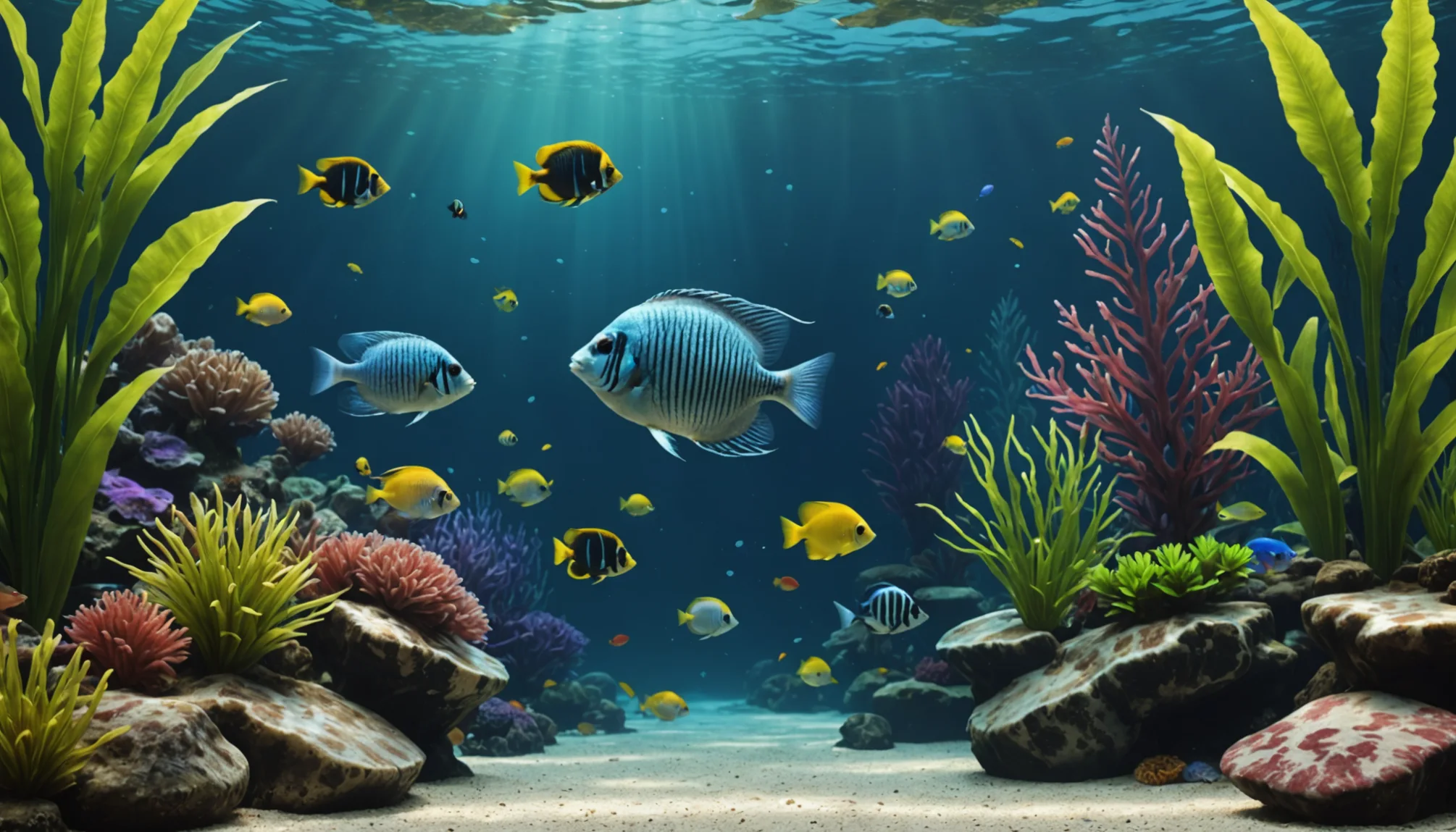
Setting up a tank for gouramis and angelfish requires thoughtful planning. These two species can live together, but they need specific conditions to thrive. A proper tank setup helps maintain harmony in the aquarium.
Ideal Aquarium Size and Dimensions
Gouramis and angelfish need ample space to swim and explore. A tank size of 30 to 55 gallons is recommended. This size supports a community setup with both species. A larger tank reduces territorial behavior, which is especially important for angelfish as they mature.
| Aquarium Size | Recommended Species | Notes |
|---|---|---|
| 30 gallons | 2-3 angelfish + gouramis | Minimum size for a few fish |
| 55 gallons | Multiple angelfish + gouramis | Ideal for a stable community |
Maintaining a minimum tank size of 30 gallons ensures that gouramis and angelfish have enough space to swim without feeling crowded. A larger tank allows for additional fish, enhancing the aquarium’s diversity.
Essential Plants and Hiding Spots for Peaceful Coexistence
Plants and decorations are vital for the tank. They provide hiding spots and help reduce stress. Common plants include:
- Java Fern: This hardy plant thrives in various conditions and offers cover.
- Anubias: Another easy-to-care-for plant that adds greenery and hiding spots.
In addition to plants, decorations like driftwood and rocks create unique environments for fish to explore. These hiding spots are crucial, allowing gouramis to retreat when they feel threatened. The right mix of plants and decorations fosters a calm atmosphere, encouraging peaceful coexistence.
Water Conditions and Parameters to Maintain
Maintaining water quality is vital for the health of both gouramis and angelfish. Both species prefer slightly acidic to neutral water with a pH between 6.5 and 7.5. The ideal temperature range is 75°F to 82°F (24°C to 28°C). Regular monitoring of water parameters is essential, including:
- pH Levels: Keep between 6.5 and 7.5.
- Water Temperature: Maintain between 75°F and 82°F.
- Hardness: Moderate hardness is suitable for these species.
- Ammonia Levels: Ensure ammonia levels are at zero for fish safety.
Regular water changes (about 10-15% weekly) help maintain water quality. A medium-powered water filter system keeps the water clean and oxygenated.
Best Practices for Ensuring Harmony in Your Aquarium
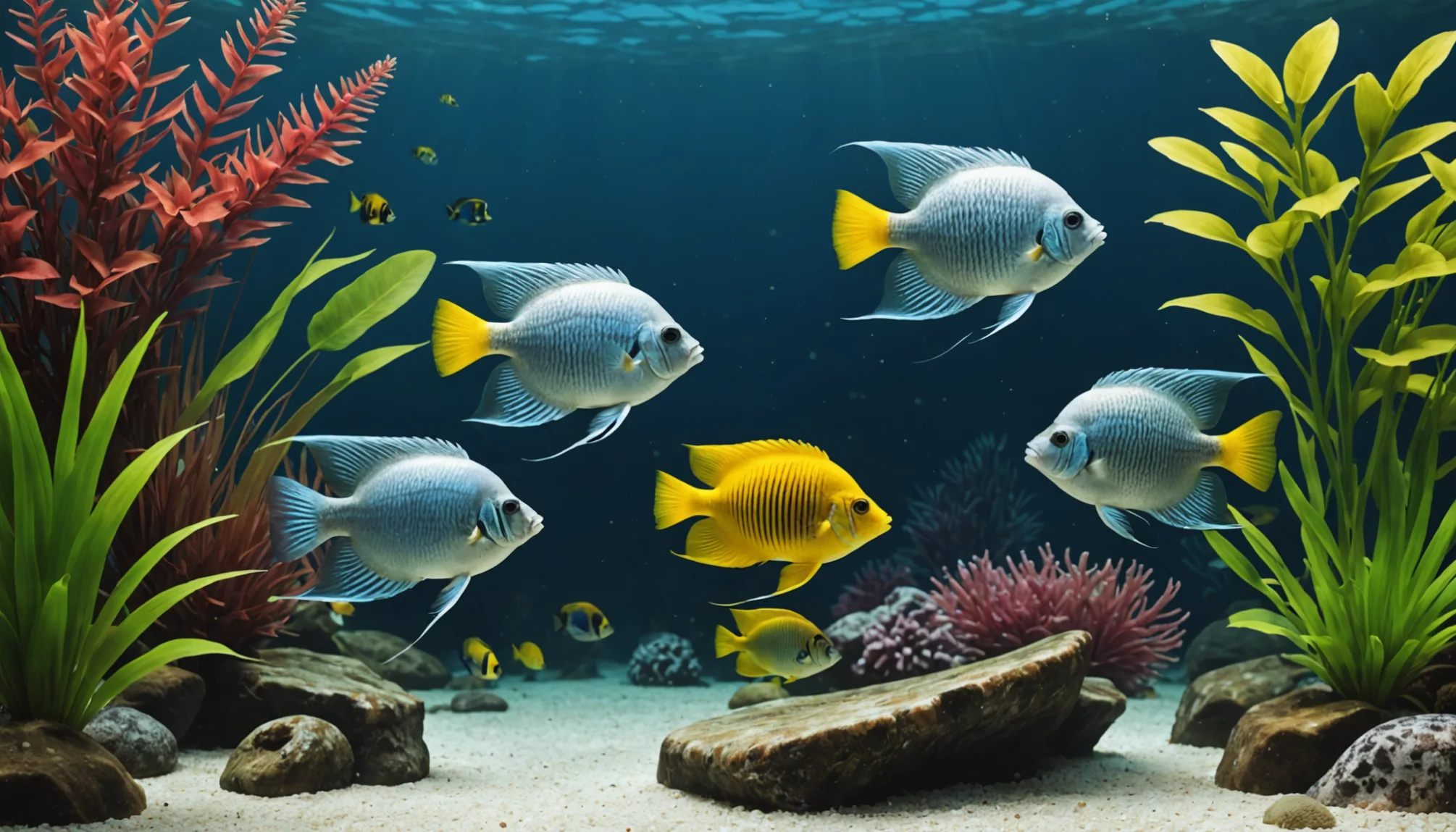
Creating a peaceful aquarium is vital for the health of fish like gouramis and angelfish. By following best practices, both species can thrive together in a harmonious environment.
Monitoring Fish Behavior and Adjusting as Needed
Observing fish behavior is crucial when keeping gouramis and angelfish. These fish can coexist, but their interactions may change. Angelfish are often territorial, especially during breeding. They might display bossy behavior, which can stress gouramis.
- Watch for Aggression: If angelfish chase gouramis or show aggression, like flaring fins or nipping, consider separating them or changing the tank setup.
- Adjust the Tank Environment: Adding more plants or decorations can create hiding spots for gouramis, helping to reduce stress.
Regularly monitoring interactions allows for timely adjustments to keep both fish happy. For instance, if gouramis hide frequently, it may be beneficial to rearrange the tank or add more plants for shelter.
Ideal Feeding Practices for Mixed Species Tanks
Feeding plays a significant role in maintaining peace in a mixed-species tank. Both gouramis and angelfish require a varied diet to stay healthy.
- Varied Diet: Offer flakes, pellets, and occasional live food like brine shrimp. A mix of food types keeps them satisfied.
- Avoid Competition: Spread food throughout the tank to ensure all fish have a chance to eat without fighting over it.
Maintaining a consistent feeding schedule keeps fish calm and reduces stress. Avoid overfeeding, as it can lead to excess waste and impact water quality.
Signs of Stress and How to Mitigate It
Recognizing signs of stress in fish is essential for their well-being. Stress can lead to health problems and aggressive behavior.
- Common Signs of Stress:
- Hiding more than usual
- Not eating
- Increased aggression toward tank mates
To mitigate stress, consider these strategies:
- Provide Hiding Spots: Adding plants, rocks, or driftwood creates safe spaces for fish to retreat when they feel threatened.
- Maintain Water Quality: Regular water changes and monitoring temperature between 75-82 degrees Fahrenheit help keep fish healthy. Aim for slightly acidic pH levels.
Implementing these practices creates a comfortable environment, promoting harmony in the aquarium. By monitoring fish behavior, offering ideal feeding practices, and recognizing stress signs, fish enthusiasts can cultivate a peaceful community for gouramis and angelfish.
Citations
Additional Fish Species Compatible with Gouramis and Angelfish

Exploring Other Peaceful Community Fish Options
Setting up a community tank with gouramis and angelfish requires thoughtful selection of additional fish species. Peaceful community fish are ideal companions as they support a balanced ecosystem. Here are some recommended species that coexist well with both gouramis and angelfish:
- Tetras: Colorful fish like Neon Tetras and Rummynose Tetras are small and peaceful. They prefer to swim in schools, which creates a lively atmosphere. Their size makes them less likely to intimidate gouramis and angelfish.
- Rasboras: Similar to tetras, rasboras, especially the Harlequin Rasbora, are gentle and thrive in groups. They occupy mid-water levels, making them great companions for fish that swim at different tank heights.
- Corydoras Catfish: These bottom-dwellers help keep the tank clean by scavenging leftover food. They are peaceful and coexist well with both gouramis and angelfish without causing stress.
- Guppies: Friendly and colorful, guppies adapt well to community tanks. They do not pose a threat to gouramis or angelfish.
- Mollies: Hardy and versatile, mollies thrive in various conditions. They are generally peaceful and add diversity with their active swimming behavior.
Comparison of Compatibility Characteristics
A comparison of the compatibility traits of these species aids enthusiasts in selecting the right mix for their aquarium. Below is a table highlighting key traits and compatibility factors:
| Fish Species | Size (inches) | Temperament | Preferred Water Conditions | Schooling Behavior |
|---|---|---|---|---|
| Neon Tetra | 1.5 | Peaceful | 72-78°F, slightly acidic | Yes |
| Rummynose Tetra | 2 | Peaceful | 72-80°F, slightly acidic | Yes |
| Harlequin Rasbora | 1.5 | Peaceful | 72-78°F, slightly acidic | Yes |
| Corydoras Catfish | 2-4 | Peaceful | 70-78°F, slightly acidic | No (but prefer groups) |
| Guppy | 1.5 | Peaceful | 72-82°F, neutral to slightly alkaline | No (but prefer groups) |
| Molly | 3-4 | Peaceful | 72-78°F, slightly alkaline | No (but prefer groups) |
Long-term Considerations for a Diverse Aquarium
Maintaining a diverse aquarium requires careful planning and ongoing management. Here are some long-term considerations for keeping gouramis, angelfish, and their companions healthy:
- Monitoring Behavior: Regular observation of fish behavior is crucial. Signs of stress or aggression, such as hiding or chasing, should be addressed promptly. This may involve rearranging tank decorations or adding more hiding spots.
- Feeding Practices: Provide a varied diet that meets the nutritional needs of all species. Different fish may prefer different types of food, so offering flakes, pellets, or frozen treats like brine shrimp can keep all fish healthy.
- Tank Maintenance: Regular water changes and a strong filtration system are vital for maintaining stable water conditions. This helps prevent waste buildup and keeps the environment clean.
- Adjusting Tank Setup: As fish grow, their needs may change. Regularly assess the tank size and arrangement to ensure all fish have adequate space to swim and hide.
- Compatibility Changes: As fish mature, their behaviors may shift. Be prepared to separate individuals if aggression increases or compatibility issues arise.
By considering these factors, fish enthusiasts can create a vibrant and balanced community aquarium that promotes the health and well-being of all its inhabitants.
Recap of Key Points for Successful Tank Management
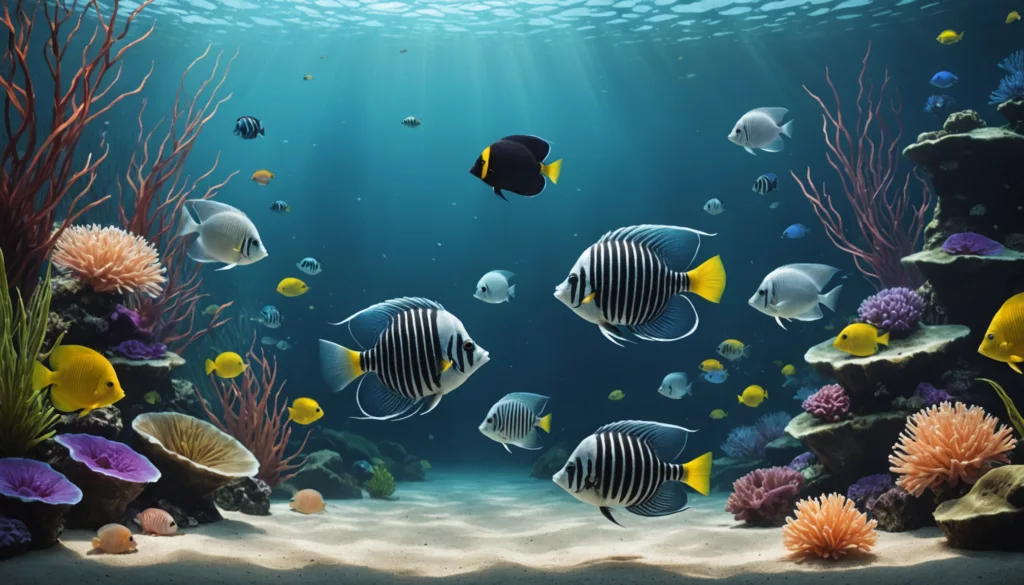
- Compatibility Considerations:
- Angelfish and gouramis can coexist, but the type of gourami matters. Dwarf Gouramis are often the best companions due to their calm nature.
- Tank Setup:
- A minimum tank size of 30 gallons is advisable to provide ample space. The aquarium should feature plenty of hiding spots and plants to minimize stress and aggression.
- Water Conditions:
- Maintaining stable water conditions is vital. Aim for a temperature range of 75-82 degrees Fahrenheit and slightly acidic pH levels. Regular water changes keep the tank clean and healthy.
- Monitoring Behavior:
- Observe the fish regularly. Angelfish can become territorial, especially during breeding. Monitoring their interactions helps prevent conflicts.
- Feeding Practices:
- Offer a balanced diet to support health. High-quality fish flakes, frozen foods, and live brine shrimp cater to their nutritional needs.
Encouragement to Share Experiences and Tips with Community
Aquarists are encouraged to share their experiences and tips within the community. Personal stories and advice provide valuable insights for others working to maintain a peaceful tank with gouramis and angelfish. Whether sharing successful setups or solutions to aggression, collective knowledge enhances the aquarium experience.
Connecting with others can inspire new ideas for tank management. Online forums, social media groups, and local aquarium clubs are excellent venues for exchanging information. By collaborating, fish keepers can learn from each other, improving environments for their aquatic companions.
Maintaining a balanced aquarium requires ongoing attention. Learning from fellow aquarists ensures that both gouramis and angelfish can live harmoniously in their tanks.
Conclusion
In summary, it’s crucial to understand the compatibility of gouramis and angelfish before placing them in the same aquarium. Recognizing their traits and the factors influencing their behavior can help ensure a peaceful environment. Remember to set up their tank with plenty of plants and hiding spots to create a comfortable habitat for all your fish friends!
By monitoring their behavior and adjusting tank conditions as needed, you can help prevent any potential conflicts. Don’t forget to explore other compatible fish species to create a vibrant community in your aquarium! Keep the curiosity alive and share your own experiences, because the world of fishkeeping is always full of new adventures!
FAQs
1. Can gouramis and angelfish live together peacefully?
Yes, gouramis and angelfish can coexist in a well-managed tank. However, their compatibility depends on factors like tank size, environment, and individual fish personalities.
2. What is the recommended tank size for gouramis and angelfish?
A minimum of 30 gallons is suggested, but 55 gallons or more is ideal for creating enough space to reduce territorial behavior and support a harmonious community.
3. How can I prevent aggression between gouramis and angelfish?
Provide ample hiding spots with plants and decorations, maintain proper water conditions, and observe fish behavior closely. If aggression persists, consider rearranging the tank or separating the fish.
4. What water conditions are suitable for both species?
Both prefer slightly acidic to neutral water (pH 6.5-7.5) and a temperature range of 75-82°F (24-28°C). Regular water changes help maintain a healthy environment.
5. Are there other fish species that can live with gouramis and angelfish?
Yes, peaceful species like tetras, rasboras, corydoras catfish, guppies, and mollies are compatible and can create a vibrant community tank.



